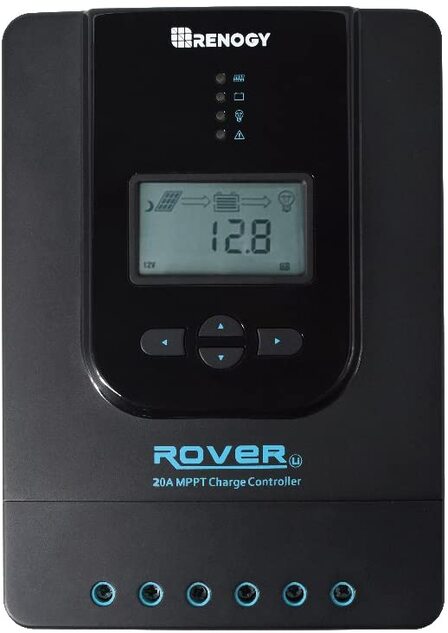I can only conclude one of the following:
- Malfunctioning charger
- Improperly configured charger
- Inappropriate charger (bad implementation for your battery)
Re. all chargers must sense batt charge state. Maybe. What is the value of the charger sensing charge state of the batts if there is a BMS ready to stop charging if a single cell goes to high? It's not the batt pack total V that is important but the individual cell V. Maybe there is a charger that will spend less time sensing batt V. Maybe there is a charger that one can configure to understand that there is a BMS so it doesn't need to spend 1/3rd of duty cycle sensing batt V, but no one has mentioned either possibility despite my repeated requests. It's just not reasonable to me that the device spends 10min charging and than about 5min not charging, sensing V near as I can figure. It doesn't take 5min to sense V from LiFePO4.
You have swapped conventions. I said voltage, and you have switched it to SoC.
For decades, chargers have been designed to charge based on voltage. All of them do this. They have to, or you don't have a charger.
In that case you would have a runaway power supply.
Voltages are extremely important to batteries.
Lastly, you never want to rely on the BMS protecting the cells as a matter of normal operation. All equipment should be configured to operate inside the BMS limits.
Re. you already suspect what I want. We're not talking about powering loads, or I'd have said so. The batt V is getting no where near up to the float V level, or I'd have said so. As I've said, I've more batts then I have panels, primarily because the charger spends so much time (apparently) sensing batt V.
This statement is another absurdity.
Going to press reset and start over:
Talk to me pls about charger behavior.
Battery chargers charge based on battery voltage typically following a three phase bulk, absorption and float process.
My charge controller spends a lot of time not charging, even tho panel voltage is high.
It is likely misconfigured, malfunctioning, or it's in appropriate for your application. The behavior you describe is extremely atypical, and I have never personally heard of the brand.
My guess is that it's sensing batt V.
As it should. As it must.
This strikes me as a waste of time
This is an erroneous conclusion.
so I'd like the charger to charge whenever panel voltage is high enough and let the BMS turn off the batts if a cell goes over voltage.
This is bad practice. Relying on a BMS to protect cells as part of routine operations can wear them out. They are a safety device. They should only be relied on to protect the battery when something goes wrong.
In my case that won't happen because I've got more LiFePO4 batts than I do panels.
This is an erroneous conclusion. A 50W solar panel could completely fill a 5000Wh (and larger) battery given enough time.
How does your charge controller behave?
Like it's supposed to as described above.
Does it spend time not charging even tho panel voltage is high?
Depends. It charges when the battery voltage dictates current is needed depending on which phase of charging it's in (bulk, absorption or float).
Are there chargers out there that charge full blast whenever panel voltage is high enough?
No. You are not describing a charger. You are describing an unmanaged current source.
I've had several of these iSunergy chargers and they all behaved the same way.
If that's the case, then they are absolute pieces of shit.
The sensing time is not configurable, afaik. Certainly nothing in the manual that discusses it and tech spt is helpless.
Two more data points that confirm my conclusion immediately above.
Will recommends several SCC on his website. None of those units would behave as you describe. They permit you to configure the charging parameters yourself to ensure that you get a fully charged battery.




